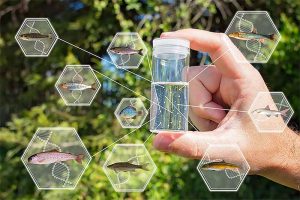Today Current Affairs: 10th January 2022 for UPSC IAS exams, State PSC exams, SSC CGL, State SSC, RRB, Railways, Banking Exam & IBPS, etc
Table of Contents
PRASHAD Projects:

The Ministry of Tourism inaugurated various components of the “Development of Govardhan, Mathura ” project under PRASHAD Scheme.
- The government also allocated funds under the Swadesh Darshan scheme for strengthening Tourism infrastructure within the state of Uttar Pradesh through various spiritual circuits such as the Ramayana and Buddha circuits.
PRASHAD Scheme:
- The ‘National Mission on Pilgrimage Rejuvenation and Spiritual Augmentation Drive’ (PRASAD) was launched by the Ministry of Tourism in the year 2014-15 with the objective of holistic development of identified pilgrimage destinations.
- The name of the scheme was changed from PRASAD to “National Mission on Pilgrimage Rejuvenation and Spiritual, Heritage Augmentation Drive (PRASHAD)” in October 2017.
- After the discontinuation of the HRIDAY scheme of the Ministry of Housing and Urban Development, the development of Heritage destinations was included in the PRASAD Scheme, changing it to PRASHAD.
- Under the PRASHAD Scheme, several religious cities/sites in have been identified for development such as Amaravati and Srisailam (Andhra Pradesh), Kamakhya (Assam), Parasuram Kund (Lohit District, Arunachal Pradesh), Patna and Gaya (Bihar), etc.
- Implementation Agency: The projects identified under this scheme shall be implemented through the identified agencies by the respective State/ Union Territory Government.
- Funding Mechanism: The Central Government provides 100% funding for the project components undertaken for public funding.
- This scheme seeks to leverage the voluntary funding available for Corporate Social Responsibility (CSR) and the Public-Private Partnership (PPP) for improved sustainability of the projects under this scheme.
Swadesh Darshan Scheme:
- Swadesh Darshan, a Central Sector Scheme, was launched in 2014 -15 for the integrated development of theme-based tourist circuits in the country.
- Under the scheme, fifteen thematic circuits have been identified- Buddhist Circuit, Coastal Circuit, Desert Circuit, Eco Circuit, Heritage Circuit, Himalayan Circuit, Krishna Circuit, North East Circuit, Ramayana Circuit, Rural Circuit, Spiritual Circuit, Sufi Circuit, Tirthankar Circuit, Tribal Circuit, Wildlife Circuit.
- Under the scheme, the Ministry of Tourism provides Central Financial Assistance (CFA) to State Governments/Union Territory Administrations for infrastructure development of circuits.
- This scheme is envisioned to synergise with other schemes like Swachh Bharat Abhiyan, Skill India, Make in India etc. with the idea of positioning the tourism sector as a major engine for job creation, driving force for economic growth, building synergy with various sectors to enable tourism to realise its potential.
National Water Awards:

Uttar Pradesh bagged the first prize for efforts towards water conservation in the National Water Awards (NWA) 2020 organised by the Ministry of Jal Shakti.
- Rajasthan and Tamil Nadu bagged the second and third prizes, respectively, in the best state category.
- The awards are organised by the Department of Water Resources, River Development and Ganga Rejuvenation, Ministry of Jal Shakti.
- The Jal Shakti Ministry had launched the first ‘National Water Award’ in 2018.
- They facilitate a good opportunity for the start-ups as well as the leading organisations to engage with the senior policymakers on adopting the best water resources management practises in India.
- They focus on the good work and efforts made by individuals and organisations across the country, and the government’s vision for the path to ‘Jal Samridh Bharat’.
e-DNA:

According to some studies, DNA floating in the air (i.e. e-DNA) can boost biodiversity conservation efforts across the world.
- Researchers from two teams have independently shown that environmental DNA (e-DNA) can potentially identify and monitor terrestrial animals.
- Animals shed DNA through their breath, saliva, fur or faeces into the environment and these samples are called e-DNA.
- Airborne e-DNA sampling is a biomonitoring method that is rising in popularity among biologists and conservationists as it provides abundant information.
- It can help understand the composition of animal communities and detect the spread of non-native species.
- This method will work with the current techniques to monitor endangered species after some fine-tuning.
- Typically, biologists observe animals in person or by picking up DNA from animals’ footprints or faeces, which demand extensive fieldwork.
- Spotting animals can be challenging, especially if they inhabit inaccessible habitats.
- It can aid in tracking long-distance migratory birds and other birds’ flying patterns. It can also capture DNA from smaller animals including insects.
- Last year (2021), a proof-of-concept study used airborne e-DNA to monitor terrestrial insects.
- As wildlife ecosystems become rapidly and extremely chaotic owing to the alarming effects of climate change, terrestrial biomonitoring techniques are expected to adapt and progress rapidly for accurate and timely monitoring.
e-DNA:
- Environmental DNA (e-DNA) is nuclear or mitochondrial DNA that is released from an organism into the environment.
- Sources of eDNA include secreted feces, mucous, and gametes; shed skin and hair; and carcasses. eDNA can be detected in cellular or extracellular (dissolved DNA) form.
- In aquatic environments, eDNA is diluted and distributed by currents and other hydrological processes, but it only lasts about 7–21 days, depending on environmental conditions.
- Exposure to UVB radiation, acidity, heat, and endo- and exonucleases can degrade e-DNA.
National TB elimination Program (NTEP):

IndianOil has committed to support the National TB elimination Program (NTEP) in India by providing an enabling environment through integrated and prioritised intervention with City Coordination Committees, District Health Societies, Technical support groups, etc., in each of the 75 districts of Uttar Pradesh and 23 districts in Punjab.
- The program’s key objective will be to screen and test the entire population of UP & Punjab every year for the next three years. Once patients are notified, their treatment will continue as per the protocol of the National TB Elimination Program.
- In 2018, Shri Narendra Modi, Hon’ble Prime Minister of India had given a clarion call to End TB in India by 2025, five years ahead of the Sustainable Development Goal (SDG) target of 2030.
- To fulfil the Prime Minister’s vision, Indian Oil Corporation Limited, under the aegis of Ministry of Petroleum & Natural Gas, in collaboration with Ministry of Health & Family Welfare, is joining the “Jan Andolan” of “TB Mukt Bharat”.
- Uttar Pradesh is the state with the largest population in India (accounting for about 20% of the population of India).
- In 2020, Uttar Pradesh, with a population of over 23.4 crores, had the highest share of tuberculosis notifications in India (over 20%).
- Punjab caters to a large number of migrant labourers from many states and ensuring cascade of care to TB patients among migrants is a challenge.
New Bridge: India & Nepal

The Union Cabinet has cleared a plan to build a new bridge connecting India and Nepal over the Mahakali river and link Dharchula in Uttarakhand with Nepal’s Dharchula.
- The bridge will be completed within three years. It will strengthen the relationship between the two countries.
India and Nepal share unique ties of friendship and cooperation. - The construction of the bridge will help people living in Dharchula in Uttarakhand and in the territory of Nepal.
Mahakali River:
- It is also known as Sharda river or Kali Ganga in Uttarakhand.
- It joins Ghagra river in Uttar Pradesh, which is a tributary of Ganga.
- River Projects: Tanakpur hydro-electric project, Chameliya hydro-electric project, Sharda Barrage.
Cheetah Reintroduction Project:

The Government is preparing to translocate the first batch of eight from South Africa and Namibia to Kuno National Park in Madhya Pradesh soon after the situation linked to the current third wave of Covid-19 becomes normal, and total 50 in various parks over a period of five years.
- In this regard, the Union Minister for Environment, Forests and Climate Change has launched the ‘Action Plan for Introduction of Cheetah in India’ under which 50 of these big cats will be introduced in the next five years.
- The action plan was launched at the 19th meeting of the National Tiger Conservation Authority (NTCA).
- Reintroduction’ of a species means releasing it in an area where it is capable of surviving.
- Reintroductions of large carnivores have increasingly been recognised as a strategy to conserve threatened species and restore ecosystem functions.
- The cheetah is the only large carnivore that has been extirpated, mainly by over-hunting in India in historical times.
- India now has the economic ability to consider restoring its lost natural heritage for ethical as well as ecological reasons.
- The cheetah, Acinonyx jubatus, is one of the oldest of the big cat species, with ancestors that can be traced back more than five million years to the Miocene era.
- The cheetah is also the world’s fastest land mammal.
- It is listed as vulnerable in IUCN red listed species.
India To Become Asia’s Second-Largest Economy By 2030:

According to the Information Handling Services (IHS) Markit report, India is likely to overtake Japan as Asia’s second-largest economy by 2030.
- Currently, India is the sixth-largest economy, behind the U.S., China, Japan, Germany and the U.K.
- IHS Markit is a global leader in information, analytics and solutions for the major industries and markets that drive economies worldwide.
Current State of India’s Economy:
- India’s GDP at current prices stood at USD 694.93 billion in the first quarter of FY22, as per the provisional estimates of gross domestic product for the first quarter of 2021-22.
- India is the fourth-largest unicorn base in the world with over 21 unicorns collectively valued at USD 73.2 billion.
- In terms of value, the size of the Indian economy stood at USD 2.7 trillion in 2021, which is projected to grow to USD 8.4 trillion by 2030.
- This boom is enough to overtake Japan, making India the second largest economy in the Asia-Pacific region by 2030.
- India’s growth rate is projected to be 8.2% in 2021-22, compared to a decline of 7.3% in the previous fiscal.
- However, the momentum of the current financial year(FY) will continue in 2022-23 as well and India will achieve 6.7% growth.
Emergency Credit Line Guarantee Scheme (ECLGS):

According to the SBI Research report on ECLGS:
- The scheme has saved 13.5 lakh firms from going bankrupt and consequently 1.5 crore jobs.
- In absolute terms, MSME loan accounts worth Rs 1.8 lakh crore were saved.
- Almost 93.7 per cent of such accounts are in the micro and small category.
- Amongst the states, Gujarat has been the biggest beneficiary, followed by Maharashtra, Tamil Nadu and Uttar Pradesh.
About the scheme:
- The scheme was launched as part of the Aatmanirbhar Bharat Abhiyan package announced in May 2020 to mitigate the distress caused by coronavirus-induced lockdown, by providing credit to different sectors, especially Micro, Small and Medium Enterprises (MSMEs).
- 100% guarantee coverage is being provided by the National Credit Guarantee Trustee Company, whereas Banks and Non Banking Financial Companies (NBFCs) provide loans.
- The credit will be provided in the form of a Guaranteed Emergency Credit Line (GECL) facility.
- No Guarantee Fee shall be charged by NCGTC from the Member Lending Institutions (MLIs) under the Scheme.
- Interest rates under the Scheme shall be capped at 9.25% for banks and FIs, and at 14% for NBFCs.
Eligibility:
- In August 2020, the scheme was extended to Mudra borrowers and Individual loans for business purposes.
- On Nov 20, the scheme was extended through ECLGS 2.0 for 26 sectors identified by the Kamath Committee and for the Health Care sector up to Mar 21, for entities with outstanding credit of above Rs.50 crore and not exceeding Rs.500 crore.
Benefits of the scheme:
- The scheme is expected to provide credit to the sector at a low cost, thereby enabling MSMEs to meet their operational liabilities and restart their businesses.
- By supporting MSMEs to continue functioning during the current unprecedented situation, the Scheme is also expected to have a positive impact on the economy and support its revival.




